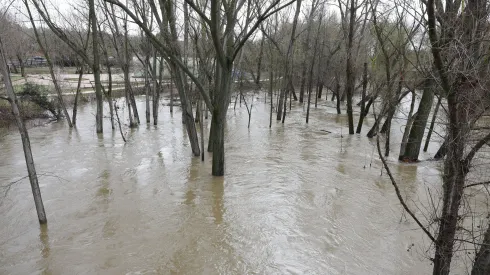-

Crop rotation best protects soil, long-term study finds
Soil fallowing and monoculture farming significantly degrade soil health, increasing erosion and dryness, while crop rotation offers the most effective protection, according to a long-term international study involving researchers from Poland, Italy and Lithuania.
-

Life without the Sun: Polish explorer describes months of darkness on Polar station where Moon is the only light
At the Polish Polar Station Hornsund, the sun remains below the horizon for more than three months. For polar explorer Dagmara Bożek, that period changes the pace of daily life. “During the polar night, metabolism slows down, sleepiness increases, and monotony sets in,” she tells the Polish Press Agency.
-

Scientists discover formula that explains stalagmite shapes
The shapes of stalagmites, upward-growing rock formations in caves, depend on the conditions in which they formed, and a single mathematical formula can describe these shapes, researchers say.
-

European glaciers show sharpest global decline, scientist warns
Glacial melting is advancing fastest in Europe, where relatively small mountain glaciers have lost up to 38.7% of their mass over the past 24 years, according to scientists.
-

Polish-led study reveals how Arctic glacier feeds nutrients into ocean ecosystems
An international team of scientists, including a researcher from the University of Wrocław, has identified new mechanisms by which the Werenskiold Glacier in the Hornsund region of Spitsbergen supplies nutrients such as iron and silicon to Arctic ecosystems.
-

Europe making progress on flood losses, but floods remain inevitable, study finds
Floods cannot be eliminated, but their human and economic toll in Europe has been steadily decreasing over the last several decades, according to a new study analyzing more than 1,700 floods across the continent since the 1950s.
-

Polish scientists study effects of climate change above Arctic Circle
Polish researchers are studying how climate change is reshaping the Mackenzie River Delta in Canada’s Northwest Territories, more than 300 kilometers above the Arctic Circle.
-

19 Polish lakes and rivers achieve top water quality class
Nineteen rivers and lakes in Poland have met the highest European Union water quality standards, according to a list compiled by the Chief Inspectorate for Environmental Protection (GIOŚ) for the Polish Press Agency (PAP).
-

From gold to radioactive crystals, Poland is home to rare and exotic minerals
Poland is home to dozens of rare and remarkable minerals, from shimmering sapphires and gold to radioactive autunite and toxic arsenopyrite. According to Bartłomiej Kajdas of the Jagiellonian University’s Natural Education Centre, many of these unique geological specimens are found in only a few places in the country - and some are known mainly from century-old reports.














